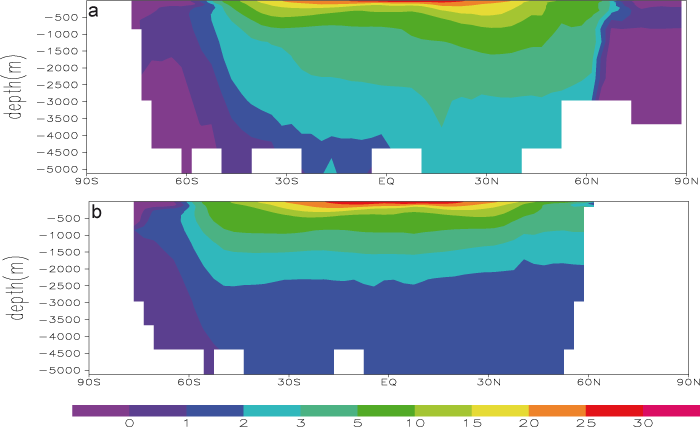1.3.3.2 Intermediate and deep layers
Below the mixed layer, a strong vertical temperature gradient is observed (except in some regions at high latitudes), which defines the permanent thermocline (Figs. 1.13 and 1.14). This shows that the majority of the ocean is strongly stratified, meaning that light water sits above dense water as required by the vertical stability of the water column. In the deep ocean, the vertical gradients are much weaker. It is somehow surprising that, near the equator, the temperature difference between the surface and a depth of 1000 m could be more than 20oC while the temperature difference between 1000 m and the ocean bottom is only of the order of 3oC.

|
The temperature and salinity of sea water are modified by interactions with the atmosphere only in the oceanic mixed layer. The mixed layer is also the area where the greatest mixing occurs, diffusion being weaker in the ocean interior. Water mass formation and transformation thus mainly occur close to the surface. When these waters flow beneath the mixed layer, they tend to keep the properties they have acquired close to the surface. This is particularly clear in the deep ocean. As a consequence, the path of important water masses, like NADW and AABW, can easily be followed from their region of formation on temperature and salinity vertical sections (Figs. 1.13 and 1.14). The influence of Antarctic Intermediate Water (AAIW), originating from the Southern Ocean, is also clearly identified as a low salinity tongue reaching the equator at intermediate depth. More generally, in the thermocline, water can originate from a nearby location (generally poleward), where surface density in winter is high enough to allow water to sink to intermediate depths.

|




